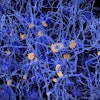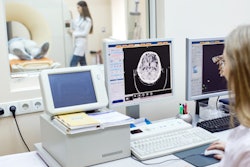Monday, November 26 | 3:00 p.m.-3:10 p.m. | SSE04-01 | Room N226
Researchers are reporting success with a deep-learning convolutional neural network designed to localize key cardiac landmarks to help with complex examinations such as cardiac MRI.Convolutional neural networks (CNNs) form a category of deep learning that uses filters to scan images to detect shapes, edges, and contours, study co-author and scheduled presenter Kevin Blansit, PhD, a graduate researcher at the University of California, San Diego (UCSD), told AuntMinnie.com.
"When these filters are combined, more complex structures can be detected, such as the mitral valve of the heart," Blansit said.
In this study, Blansit and colleagues sought to use CNNs to select imaging planes similar to those chosen by dedicated cardiac technologists. The sample included 472 short-axis and 892 long-axis cine series from cardiac MRI scans performed at UCSD from February 2012 to June 2017. The data were then divided into 80% of the cases for training, with the remaining 20% for testing.
"We teach the CNN to perform this task correctly by repeatedly showing the network example images that have a corresponding label," Blansit said. "Over time, the network learns to correctly identify the structures in an image. Because of the wide applicability of deep learning to image data, the artificial intelligence community has become excited in applying these techniques to help radiologists."
In the end, the CNN produced imaging planes on both the long and short axes that were similar to those chosen by the cardiac technologists.


.fFmgij6Hin.png?auto=compress%2Cformat&fit=crop&h=100&q=70&w=100)





.fFmgij6Hin.png?auto=compress%2Cformat&fit=crop&h=167&q=70&w=250)











